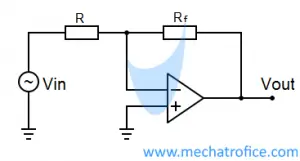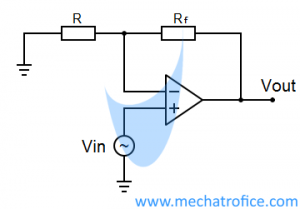Operational Amplifier op amp Viva Interview Questions and Answers
What is an op-amp?
An operational amplifier is a direct coupled high-gain electronic amplifier with a differential input to which feedback is given to control its response characteristics at its single-ended output.
What is called a differential amplifier?
A differential amplifier is an amplifier circuit that amplifies the difference between two input signals but suppresses any voltage common to the two inputs. The output of the circuit is ideally proportional to the difference between the two signals.
What are the properties of an Ideal op-amp?
- Infinite input impedance
- Zero output impedance
- Infinite open loop voltage gain
- Infinite Bandwidth
- Zero input offset voltage
- Infinite output voltage
- Zero noise
- Infinite common-mode rejection ratio (CMRR)
- Infinite power supply rejection ratio (PSRR)
- No temperature drift
What is an inverting and non-inverting operational amplifier?
Inverting Operational amplifier
Inverting amplifier has an inverted output which is 180 degrees out of phase with respect to the input. The output voltage changes in the opposite direction to the input voltage.

Non-inverting operational amplifier
Non Inverting amplifier has an in-phase output with respect to the input. The output voltage changes in the same direction as the input voltage.

Write the Gain formula for an inverting and non-inverting op-amp.
Inverting Operational Amplifier Gain, A = – Rf / R
Non Inverting Operational Amplifier Gain, A = 1 + Rf/ R
List a few applications of the operational amplifier.
- Inverting amplifiers
- Non-inverting amplifiers
- Differential amplifiers
- Summing amplifiers
- Integrator
- Schmitt trigger
- Voltage followers
- Analog to Digital converter
- Digital to Analog converter
- Filter circuits
- Instrumentation amplifiers
- Oscillator circuits
What is called input offset voltage of an Op-amp?
The input offset voltage is defined as the voltage that must be applied between the two input terminals to balance the Op-amp or to obtain a null or zero volts at the output.
What is called output offset voltage of an Op-amp?
The output offset voltage is the DC voltage present at the output of the op-amp when the two input terminals are grounded or shorted.
Define CMRR.
Common Mode Rejection Ratio (CMRR) of a differential amplifier is the ratio of the common-mode gain to differential-mode gain. It is the ability of the amplifier to reject common-mode signals.
Define PSRR.
Power Supply Rejection Ratio (PSRR) is the ratio of the change in supply voltage to the corresponding change in the output voltage it produces. It is the capability of the circuit to suppress any power supply variations to its output signal.
Define the slew rate.
Slew rate is defined as the maximum rate of change of output voltage or current by a step input per unit of time. It is expressed as a V /µs, that it the output voltage rises or falls with respect to a unit time.
What are practical op-amp parameters?
- Finite input impedance
- Output impedance is not zero
- Finite Bandwidth
- Output saturation voltage
- Input offset voltage is present
- Output offset voltage is present
- Finite CMRR
- Finite PSRR
- Affected by Noise
- Cause Temperature drift
List few op-amp IC’s.
IC 741 – It is the most commonly used op-amp IC comes with 8-pin dual-in-line package.
IC LM324, LM224, LM2902 are a series of IC’s with quad operational amplifiers.
LM709, LM101, etc… are different general purpose operational amplifiers used for industrial purposes.
Superb sir
Nice,but give us some important keypoints regarding adder and subtractor
Sure
Nice, but give us some another questions regarding substractor
please add more questions so that it can help us and
sure